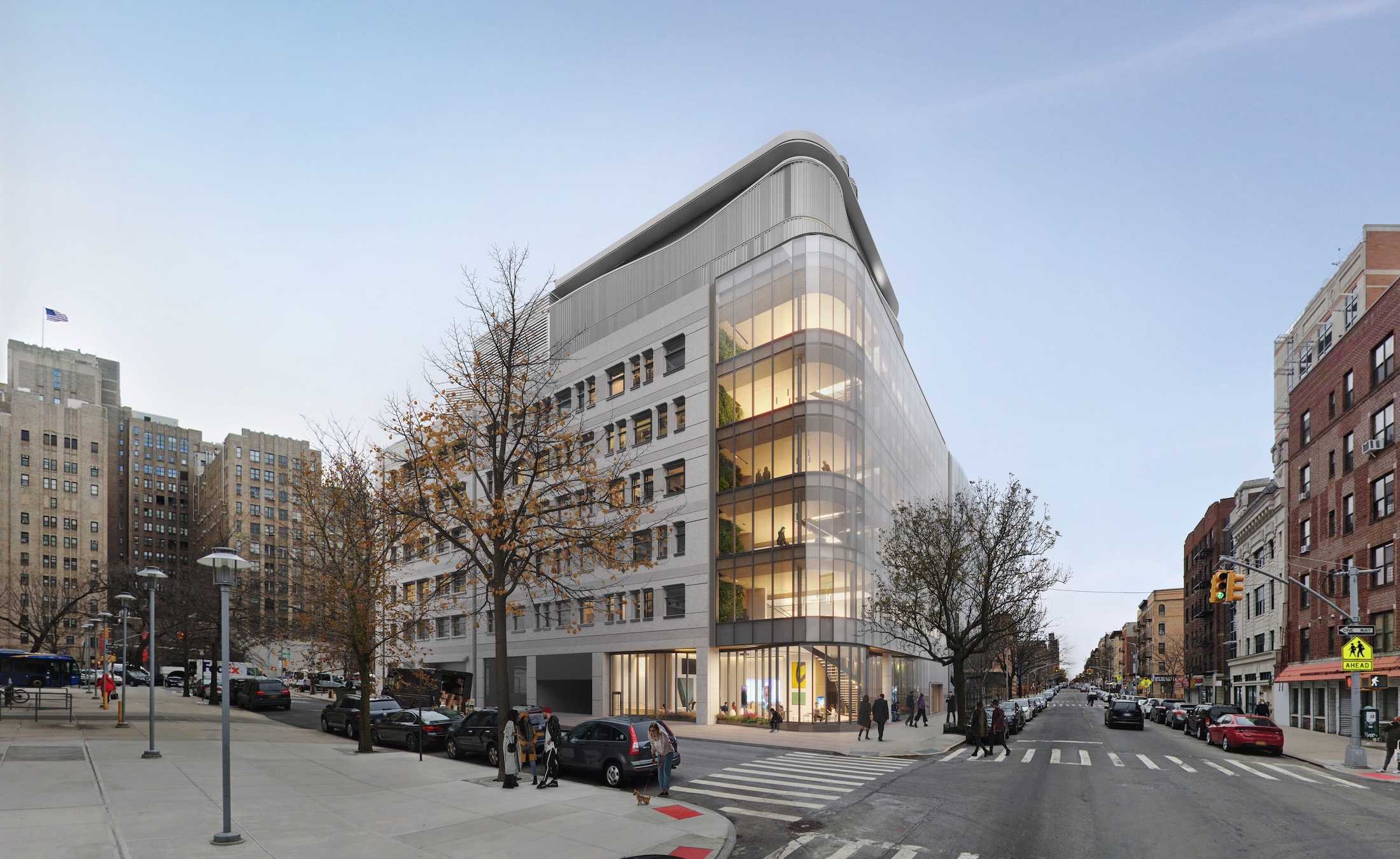Columbia University will soon begin construction on New York City’s first all-electric academic research building. Designed by Kohn Pedersen Fox (KPF), the 80,700-sf building for the university’s Vagelos College of Physicians and Surgeons will provide eight floors of biomedical research and lab facilities as well as symposium and community engagement spaces.
With a design that uses significantly less energy than similar buildings, the Biomedical Research Building will outperform emission limits set by local law and is expected to perform 30% more efficiently than the commercial building benchmark. The facility also supports Columbia University’s plan to introduce no new fossil fuel infrastructure into campus buildings and to achieve campus-wide net-zero emissions by 2050.
Because laboratories have greater ventilation requirements than other buildings, they require more robust mechanical systems, which typically result in increased energy usage. The design team worked with sustainability consultant Atelier Ten to create an all-electric research lab building that could handle the facility’s high heating loads.
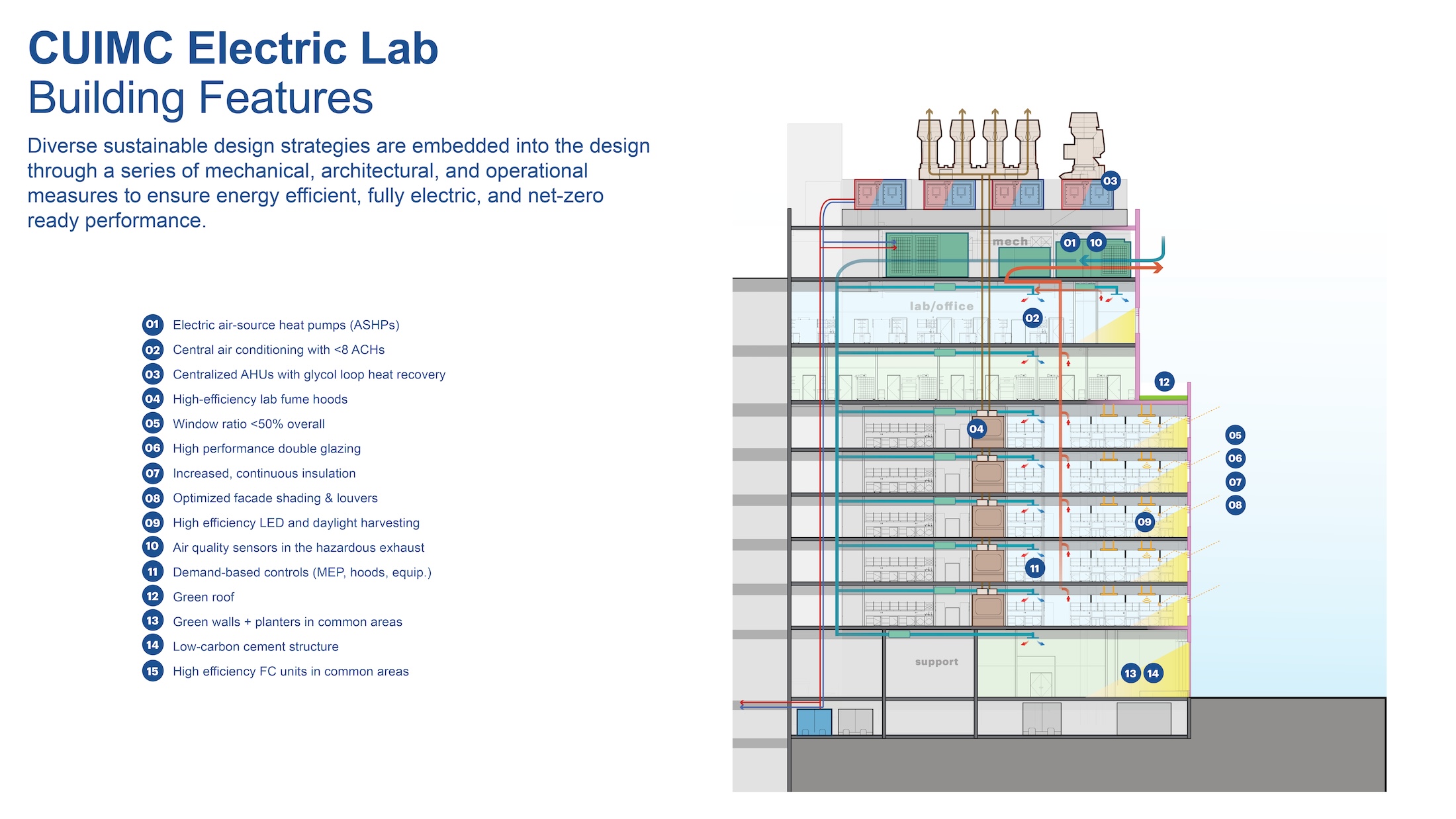
The Biomedical Research Building is heated and cooled with electric air source heat pumps that allow for energy recovery between the heating and cooling fluids, providing periods of free tempering during the year. Air-side energy recovery systems use waste heat to reduce the total energy needed to condition the building.
The high-performance façade features a window-to-wall ratio below 50%. Exterior shading and a louver system reduce solar heat gain and glare while reflecting natural light into the labs.
The building’s design integrates biophilic elements such as green walls and natural and renewable materials in collaboration spaces. A large connecting stair encourages active circulation, and corner lounges foster collaboration among researchers.
On the Building Team:
Architect: Kohn Pedersen Fox (KPF)
MEP engineer: AKF Group
Structural engineer: Hatfield Group
Sustainability consultant: Atelier Ten
Lab planning consultant: Jacobs
Construction manager: LF Driscoll Healthcare

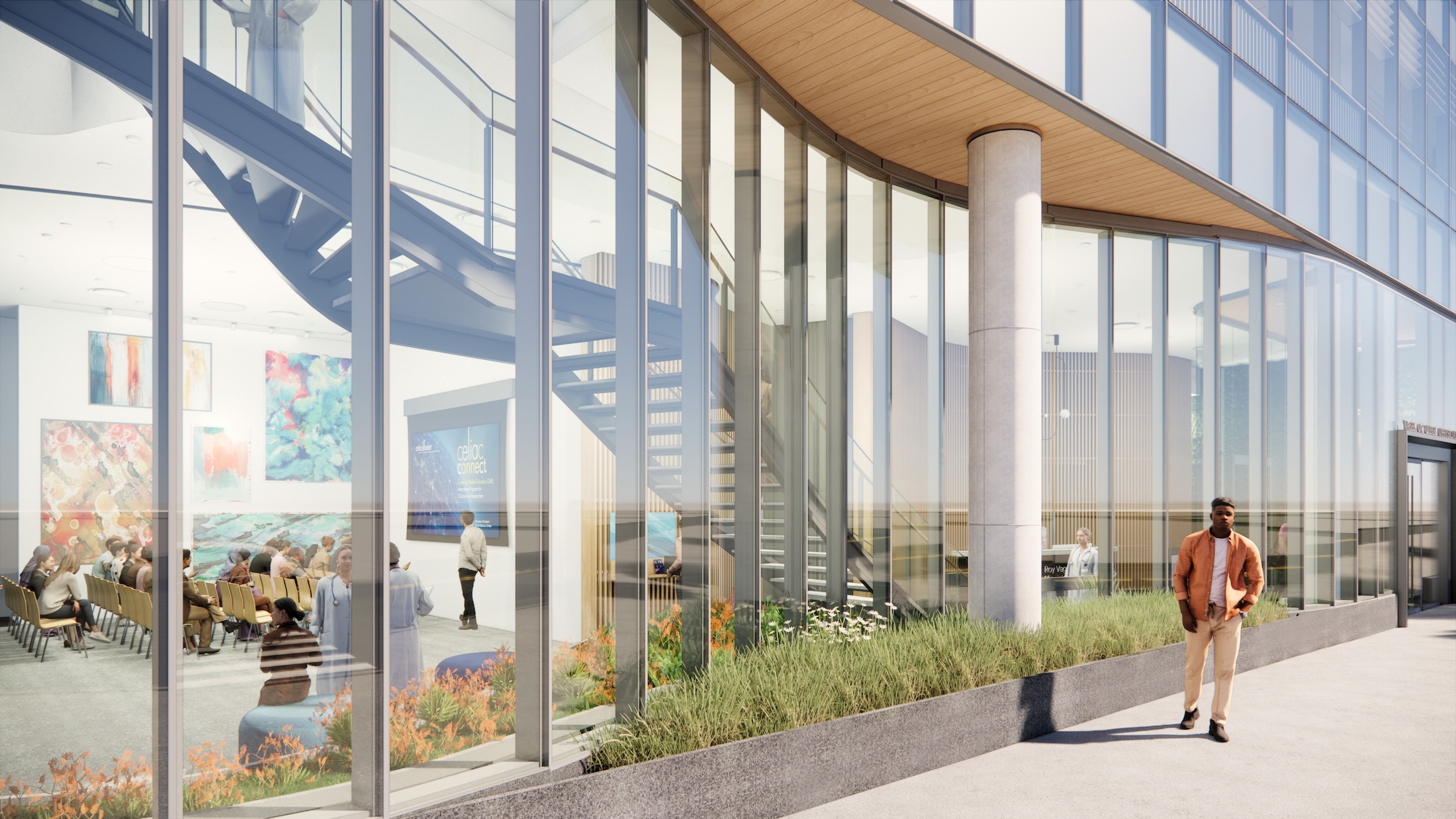


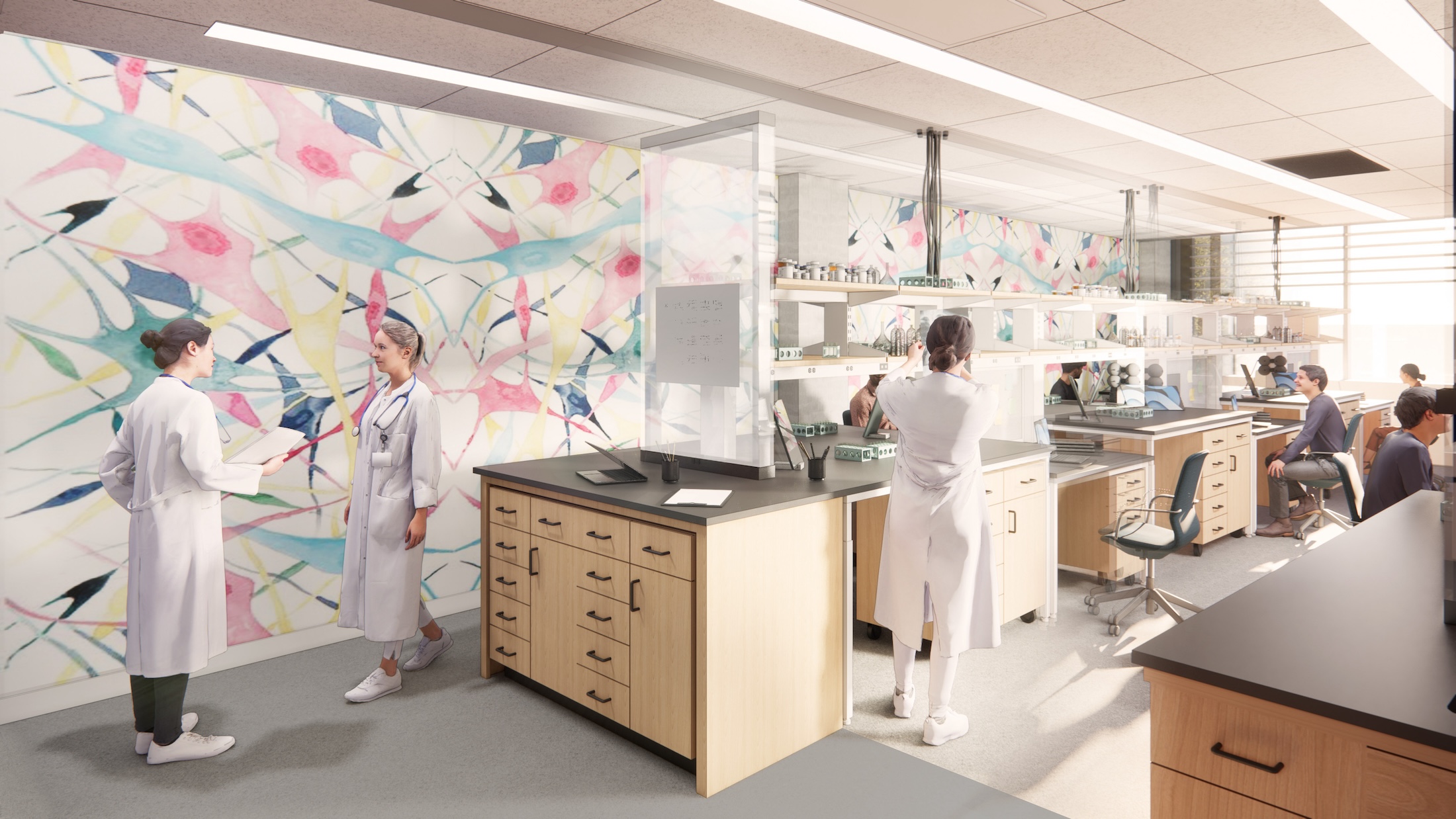

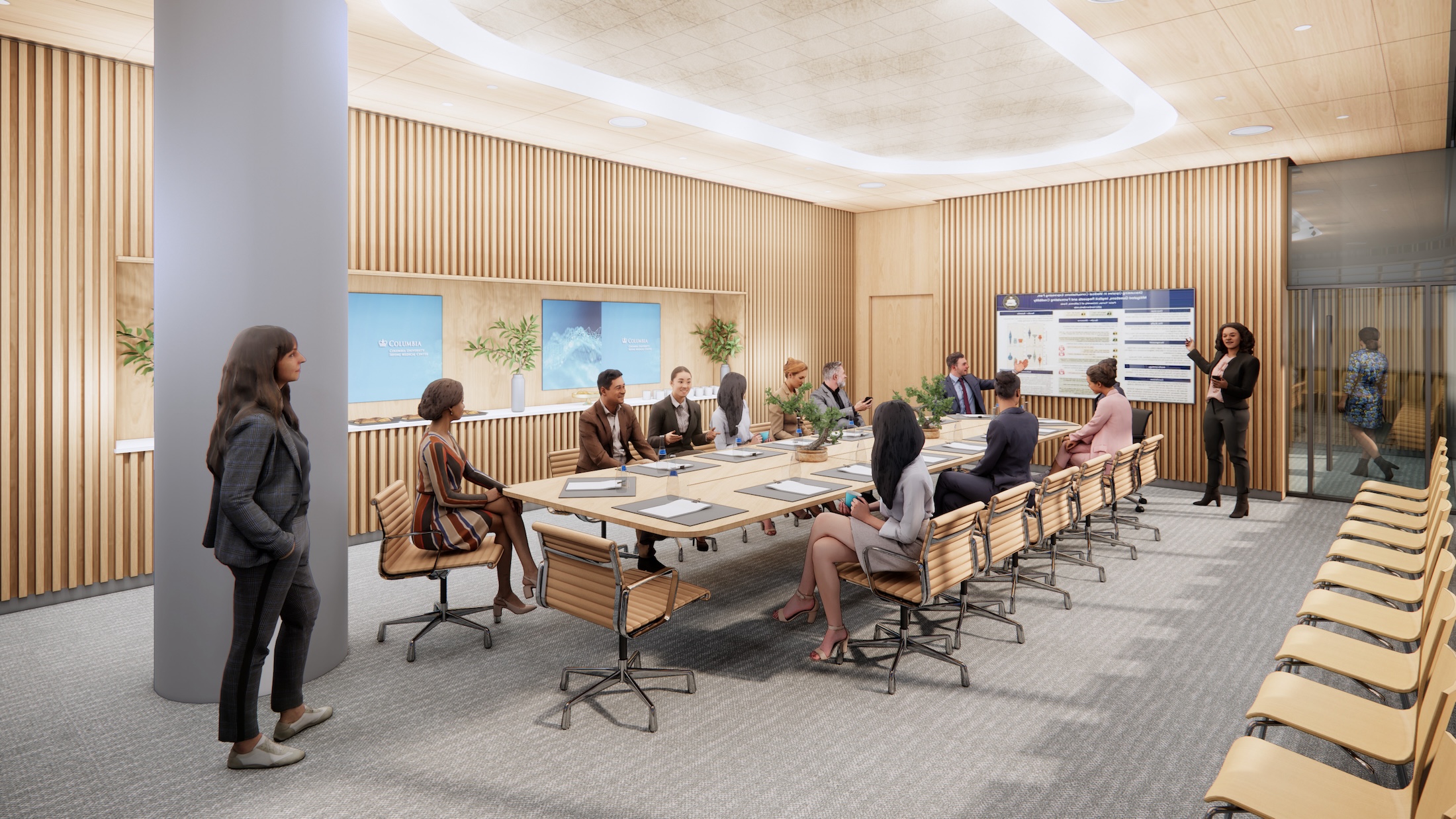

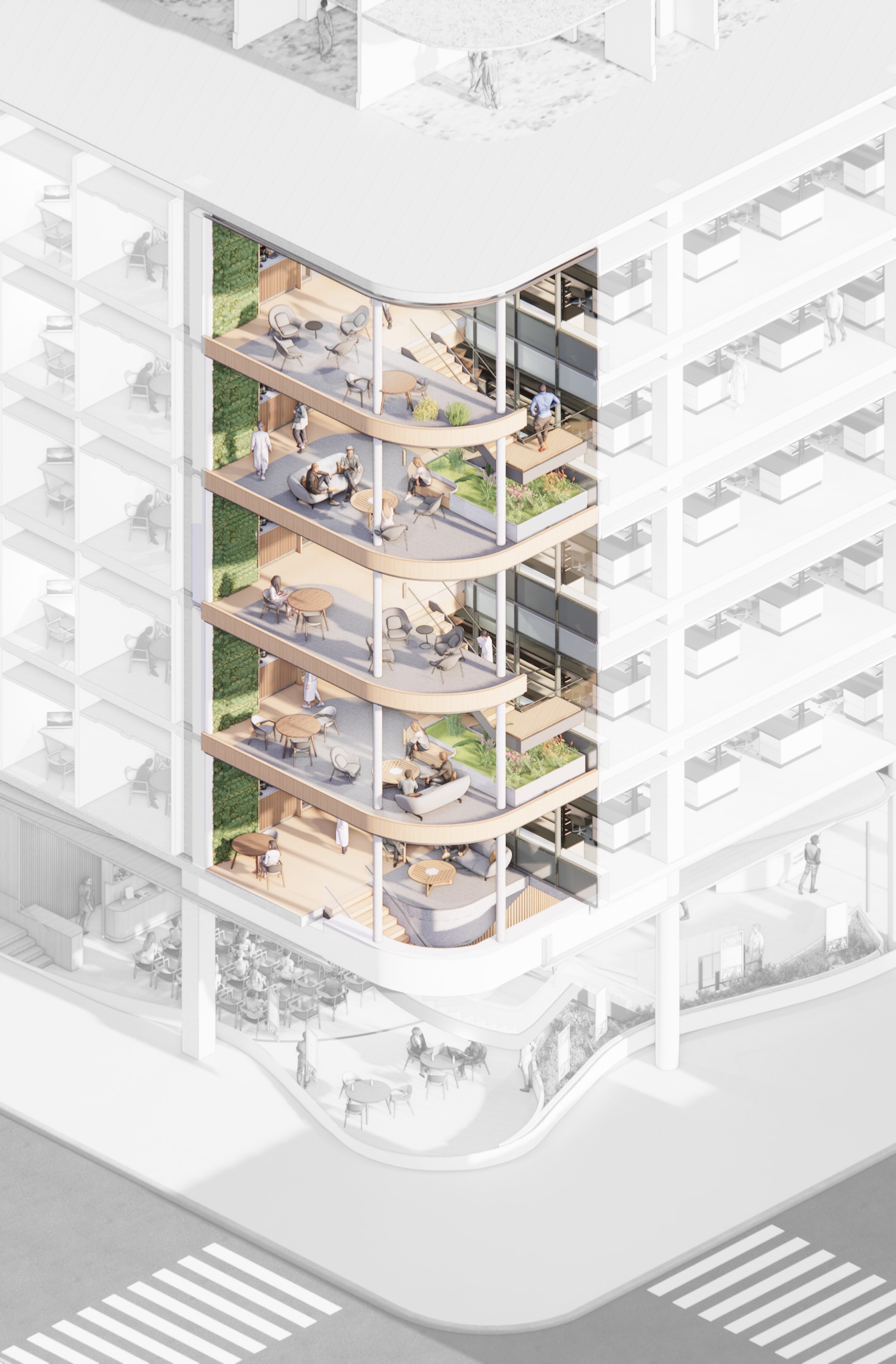
Related Stories
| Jan 11, 2014
Getting to net-zero energy with brick masonry construction [AIA course]
When targeting net-zero energy performance, AEC professionals are advised to tackle energy demand first. This AIA course covers brick masonry's role in reducing energy consumption in buildings.
| Jan 8, 2014
Strengthened sprinkler rules could aid push for mid-rise wood structures in Canada
Strengthened sprinkler regulations proposed for the 2015 National Building Code of Canada (NBCC) could help a movement to allow midrise wood structures.
Smart Buildings | Jan 7, 2014
9 mega redevelopments poised to transform the urban landscape
Slowed by the recession—and often by protracted negotiations—some big redevelopment plans are now moving ahead. Here’s a sampling of nine major mixed-use projects throughout the country.
| Dec 13, 2013
Safe and sound: 10 solutions for fire and life safety
From a dual fire-CO detector to an aspiration-sensing fire alarm, BD+C editors present a roundup of new fire and life safety products and technologies.
| Dec 10, 2013
16 great solutions for architects, engineers, and contractors
From a crowd-funded smart shovel to a why-didn’t-someone-do-this-sooner scheme for managing traffic in public restrooms, these ideas are noteworthy for creative problem-solving. Here are some of the most intriguing innovations the BD+C community has brought to our attention this year.
| Nov 27, 2013
Wonder walls: 13 choices for the building envelope
BD+C editors present a roundup of the latest technologies and applications in exterior wall systems, from a tapered metal wall installation in Oklahoma to a textured precast concrete solution in North Carolina.
| Nov 26, 2013
Construction costs rise for 22nd straight month in November
Construction costs in North America rose for the 22nd consecutive month in November as labor costs continued to increase, amid growing industry concern over the tight availability of skilled workers.
| Nov 25, 2013
Building Teams need to help owners avoid 'operational stray'
"Operational stray" occurs when a building’s MEP systems don’t work the way they should. Even the most well-designed and constructed building can stray from perfection—and that can cost the owner a ton in unnecessary utility costs. But help is on the way.
| Nov 15, 2013
Greenbuild 2013 Report - BD+C Exclusive
The BD+C editorial team brings you this special report on the latest green building trends across nine key market sectors.
| Nov 15, 2013
Metal makes its mark on interior spaces
Beyond its long-standing role as a preferred material for a building’s structure and roof, metal is making its mark on interior spaces as well.


